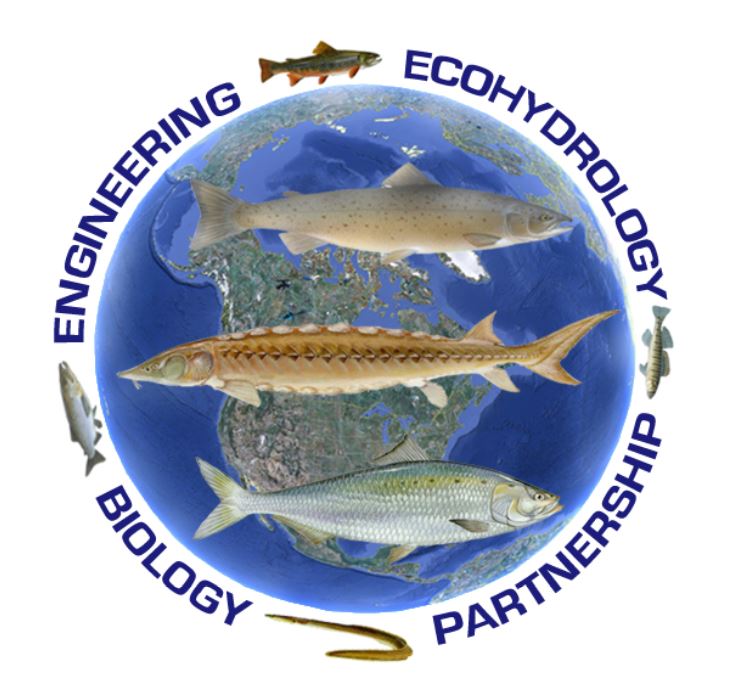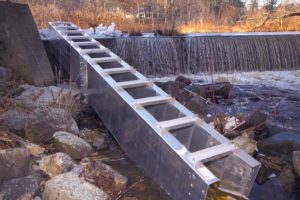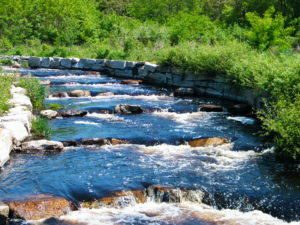What is Aquatic Organism Passage/Fish Passage?
Fish Gotta Swim
Fish need to move. Salmon, trout, herring, sturgeon, paddlefish, hilsa, largemouth yellowfish – across the world, many types of fish move between and within waterways during their various life stages in order to forage, reproduce, and find safety from predators and extreme conditions. For some of these species, two or more migrations are compulsory in order for these species to complete their life cycle. Without these movements, populations can be severely reduced.
Aquatic Organism Passage
Fish aren’t the only organisms that need to move – other organisms, including mussels, turtles, crayfish, and even aquatic insects, move within and between aquatic systems. So while the most common term for the work we do to facilitate this movement is “Fish Passage”, it’s more accurate to call it Aquatic Organism Passage (AOP).
So What IS Fish Passage (or AOP)?
Every dam, tide gate, and road that crosses a river, lake, or estuary, forms a potential barrier to passage. Water diversions (such as hydroelectric canals, irrigation canals for agriculture, municipal water supply diversions, industrial canals, and flood abatement diversions) can also lead aquatic species away from the natural channel, where they may be trapped or expend to much energy to complete their journey. Thus, these diversions can also serve as a type of barrier.
Simply put, AOP/Fish Passage is the removal of barriers to movement through and between bodies of water. This can include dam removal, road removal, or enlargement of culverts and tide gates to allow more natural flows through these barriers. Sometimes the barrier can’t be removed, but can be modified to allow some organisms to pass safely. This type of solution can include various types of fish ladders or fish lifts to provide upstream passage for fish, rock ramps or nature-like fishways to allow more natural passage past dams, or nets and guidance systems to provide safer downstream fish passage at hydroelectric dams.
Additional Benefits of AOP
Removing or replacing barriers to AOP don’t just benefit fish and invertebrates. They can provide benefits to human health and safety, as well as the entire ecosystem the barrier is located in.
Additional benefits of barrier removal include:
- Reducing the risk that a barrier will fail catastrophically (such as during a flood), and the associated safety and environmental impacts
- Restoration of more natural water, sediment, and nutrient flows and/or tidal exchange. In addition to ecological benefits, this often results in reduced maintenance cost and improved resilience of human infrastructure, such as road-stream crossings.
-
Improved boating opportunities by opening up longer sections of river and reducing hazards
- Improved commercial and recreational fishing due to stabilized fish populations
- Increases in populations of other wildlife, including birds and mammals, that depend on fish for food
How Can I Learn More?
- Attend our free Webinars
- Attend the International Fish Passage Conference
- Look up relevant citations and past conference presentations in the Joint EWRI-AFS Fish Passage Reference Database
- Participate in World Fish Migration Day



